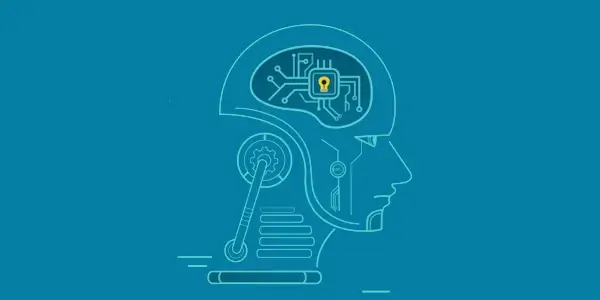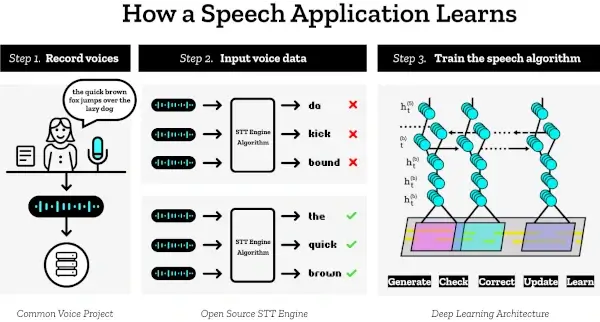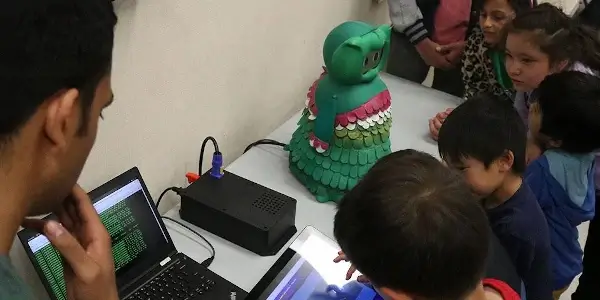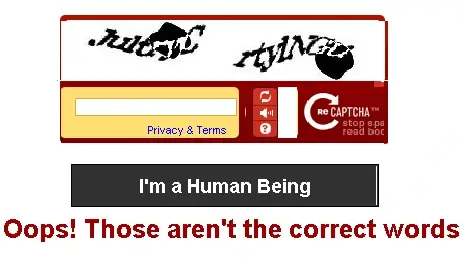
The artificial neuron was first hypothesized in the 1930s, but only in the last decade have we seen the widespread application of artificial neural networks and machine learning to everyday technologies.
Broadly speaking, machine learning describes a technical discipline defined by computer algorithms that improve automatically through experience and the use of data. These days, the combination of machine learning and "big data" power an increasing number of digital tools that we interact with daily.
Toggl, one of several Trello alternatives, has even harnessed machine learning to create unique skills tests to streamline the process of hiring new employees!
One important area where machine learning is making a tangible difference is web accessibility. For those with disabilities, many of the things that make the internet a more user-friendly environment haven't been adopted due to insufficient web testing, the labor intensity of the changes needed, or the vast amounts of data processing they require.
However, with the capabilities of machine learning and modern artificial intelligence, more and more accessibility features are becoming easy for web developers to implement. Here are five ways machine learning is making the web a more welcoming place.
1. Better text-to-speech software
A text-to-speech tool converts written text into speech that can be heard and understood. Thanks to machine learning, specifically something called deep learning, text-to-speech tools like Google's WaveNet have advanced digital speech synthesis to the point where it has now become a familiar feature of many digital applications.

Originally developed to provide visually impaired people with better access to written texts, text-to-speech software is an invaluable technology for those with poor eyesight or learning difficulties.
For example, the Audiofont tool converts written content from online sources, PDF documents, web pages, and other types into downloadable audio files.
When integrated with optical character recognition technology, AI text to speech tools can provide much-needed independence to people who would otherwise have no way of reading vast quantities of written material online.
Devices like reading pens even allow the power of machine learning to be turned to non-digital text, which is a game-changer for the visually impaired.
2. Artificial speech recognition for subtitles
Machine learning is changing our digital environment in many ways and is behind the emergence of innovative workforce technologies that automate lots of previously labor-intensive economic activities.
For example, in the past few years, something astonishing has happened to how we create subtitles for film and video. Artificial speech recognition is made possible because AI models, powered by machine learning, have sifted through millions of hours of audio recordings, learning speech patterns statistically.
What's more, deep learning algorithms are now better than professional human lip-readers at deciphering speech from video alone. When combined, the two speech recognition technologies - visual and audial - make efficient and highly precise algorithmic subtitle writing possible.
Once the task fell solely to human transcribers, more and more video content now has subtitles written partly or entirely by AI. As a task once deemed too laborious for the majority of online videos can be carried out by software, it means much more material is available with subtitles.
For the hearing impaired, more subtitles open up whole swathes of the internet for their enjoyment.
3. Assisting people with autism and learning difficulties
Several new and in-development technologies powered by machine learning can make the internet a more hospitable place for people with autism and learning difficulties.
For those who struggle with interpreting complex or colloquial language, the power of machine learning is helping to translate online materials into a more accessible format. For example, IBM's AbilityLab Content Clarifier can simplify, summarize, and augment content to increase comprehension for people with cognitive disabilities, the aging population, and those learning English as a second language.
Machine learning-powered AI models, including various attended and unattended bots, have also been used to assist children with autism in their schooling, which increasingly takes place online.
One research team provided autistic children with a robot named KiWi, which served as a coach to the children while they tackled mathematics problems. The robot recorded the children's attention throughout lessons and after a month, was able to train an algorithm to recognize when they were concentrating.

4. Machine learning is making the web safer
Cybersecurity is something many of us think about when we surf the web. Still, for people with disabilities and their carers, online threats present a serious barrier to using the internet safely and can even put people off browsing the web entirely.
While antivirus software goes a long way in protecting us online, advances in machine learning have led to more comprehensive threat intelligence platforms that can identify potential security breaches, analyze threat levels, and neutralize danger more quickly and effectively than traditional antivirus software alone.
By creating better defenses against online threats, machine learning allows more people to access the benefits of the internet, from e-commerce platforms to learning resources. Without the fear of viruses, financial fraud, and identity theft, people who might otherwise be put off can enjoy these advantages with greater peace of mind.
5. Facial recognition is removing the need for passwords and CAPTCHAs
From robotic process automation that streamlines the process of creating digital bots to powerful software tools that can augment human workers, machine learning is lending the web its capacity to handle large volumes of data and maximize productivity.
Yet, the internet is not associated with a productivity boost for some people but with difficulties due to passwords and CAPTCHAs.
You may be familiar with facial recognition as a handy security feature through your smartphone, but have you ever considered how useful this technology could be for people with diseases that inhibit their fine motor skills?

Some disabilities can make inputting passwords or patterns difficult. By removing the need for these, facial recognition can make devices and websites that need to implement some form of security more accessible.
In a similar vein, facial recognition is removing the need for CAPTCHAs as a means of authenticating web users and preventing malicious attacks by bots. Even for those with perfect vision, CAPTCHAs can be hard to solve at times, so imagine how difficult they could be for someone visually impaired and the significant barriers to accessing the web that this puts up.
With machine learning making the web more accessible by the day, these advancements can only be seen as a force for good and a tool to support enhanced inclusivity to the benefit of all.
X


 Copyright 2000-2025, WebSitePulse. All rights reserved.
Copyright 2000-2025, WebSitePulse. All rights reserved.